
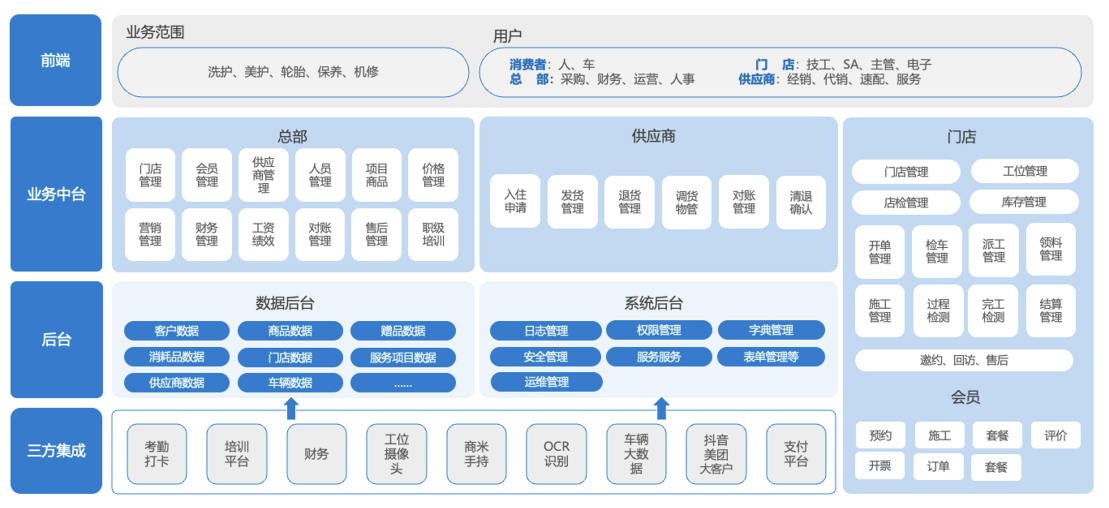
Headquarters side: Provides functions such as a data dashboard, strategic decision-making, financial control, centralized procurement center, marketing activity planning, and standardized system issuance and monitoring.
Store end: Integrating functions such as vehicle receiving, invoicing, construction, procurement, inventory, finance, and customer management, it serves as the core workstation for daily store operations.
Supplier side: Open up a platform for suppliers to enable online order collaboration, logistics tracking, reconciliation and settlement, and improve supply chain efficiency.
Member portal: Develop mini-programs or apps to provide members with functions such as online booking, service inquiries, consumption records, point redemption, and online payment, enhancing customer data-driven decision-making: The headquarters can view real-time operational data from each store to facilitate precise decision-making.
Standardization implementation: Ensure that the processes, prices, and service standards established by the headquarters are consistently implemented across all stores.

Data is interconnected across various systems, for instance: training outcomes are linked to performance-based pay, and vehicle inspection data is tied to construction quality inspection.
Provide a system building toolkit, allowing the headquarters to customize processes, standards, and evaluation indicators.
Replicability: Embedding the management system into the system is the foundation for achieving rapid replication and expansion of stores.
Quality controllable: By enforcing systematic processes and standards, we ensure consistency in service quality and customer experience.
Cost reduction and efficiency enhancement: Optimize all aspects, reduce dependence on human experience, and improve both labor efficiency and floor space efficiency.
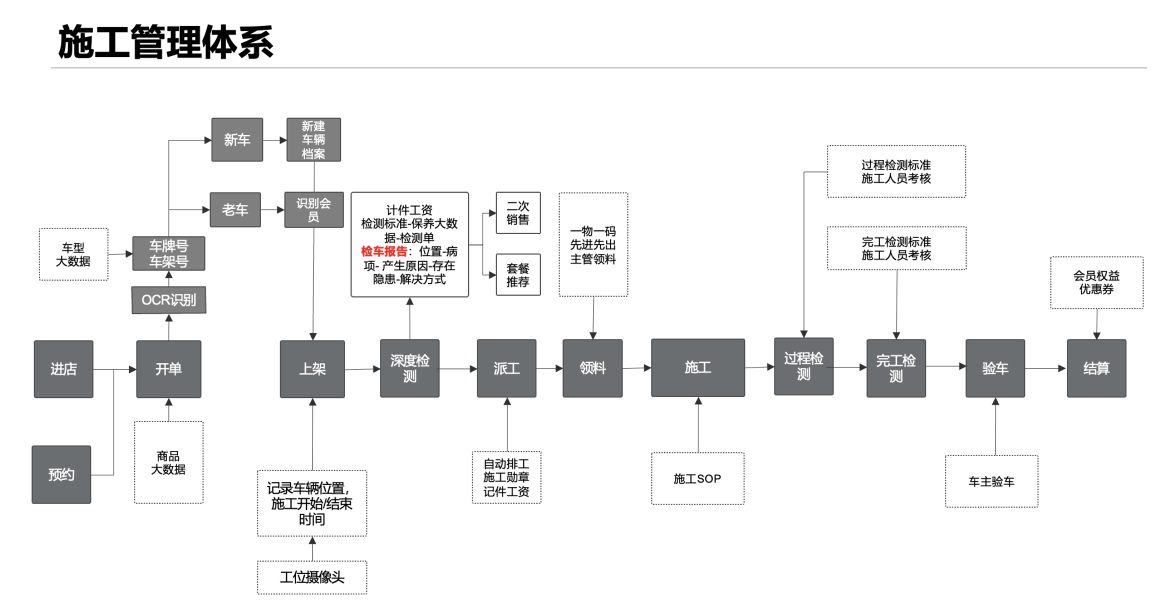
Work order flow transformation: Upon receiving the vehicle, a standardized work order is automatically generated, encompassing standard construction items, procedures, labor hours, and required accessories.
Dispatch and scheduling: Intelligent dispatching to the right technician, displaying technician busy/idle status, optimizing workshop efficiency.
Process monitoring: Key nodes (such as commencement, completion, and quality inspection) require scanning for confirmation, with the responsible person and time point recorded.
Knowledge base integration: During construction, standard operating procedures (SOPs), technical manuals, and fault code libraries can be accessed at any time.
Service standardization: Ensure consistent quality of the same service provided by different technicians and stores.
Responsibility traceability: Any issue can be traced back to a specific work order, technician, and stage, facilitating management and improvement.
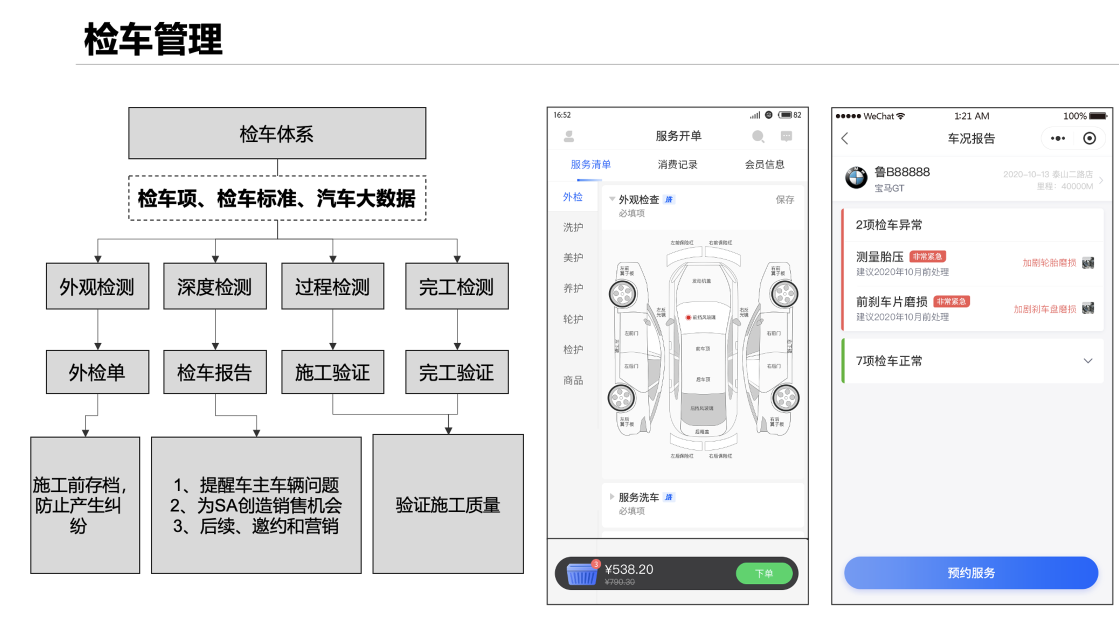
Multimedia report: Support for taking photos and embedding videos in vehicle inspection reports, visually displaying vehicle issues and enhancing customer trust.
One-click report generation: Automatically generate professional and easy-to-understand electronic reports, which can be sent directly to customers via WeChat.
Demand conversion: Identified issues can be directly converted into repair suggestions and sales opportunities, thereby increasing the average transaction value per customer.
Building trust: Transparent and professional vehicle inspection reports are key to establishing a professional image and gaining customer trust.
Precision marketing: Leveraging authentic vehicle data to uncover customer needs and achieve precise sales conversion.
Preserve evidence: Electronic reports can serve as proof of service, reducing subsequent disputes.
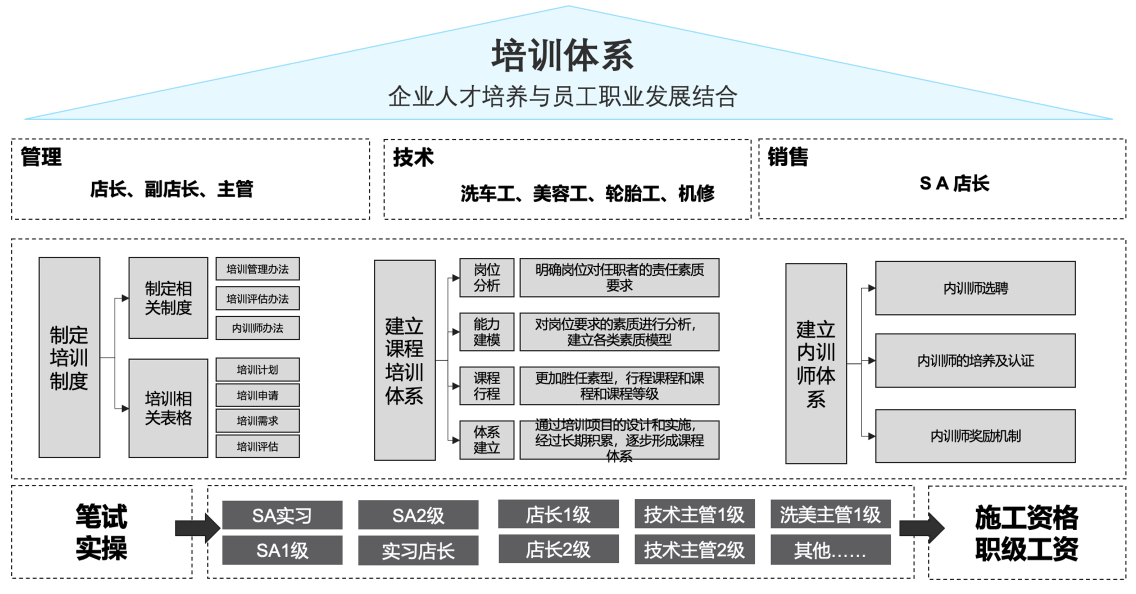
Course Center: Upload video and graphic courses on product knowledge, construction standards, sales techniques, service processes, etc.
Tasks and assessments: The headquarters can assign learning tasks, set up online exams, and automatically record assessment results.
Points and Rankings: Establish a learning points system to stimulate learning enthusiasm, and appropriately link it to salary performance.
Mobile learning: Support learning anytime on mobile phones and tablets, making use of fragmented time.
Rapid talent replication: Shorten the growth cycle of new employees and support the rapid expansion of stores.
Unified service language: Ensure that all employees have the same understanding of products and services as the headquarters.
Reduce training costs: Reduce travel and time costs associated with centralized offline training.

Mobile supervision: Headquarters supervisors or regional managers can complete regular or unannounced inspections of stores through the app, supporting photo and video recording, scoring, and text recording.
Closed-loop task management: Identified issues automatically generate rectification tasks, assign responsible persons and set deadlines, and the system automatically tracks the progress of rectification, provides overdue warnings, and ensures that issues are resolved.
Data-driven Ranking and Insights: The system automatically generates a ranking list of store inspection scores, and through data analysis, it can identify common weak links across stores nationwide, providing the headquarters with precise directions for improvement.
Ensure operational consistency: Ensure that all standards (service, pricing, processes, marketing) set by the headquarters are implemented 100% across all stores, maintaining a unified brand image.
Prevent risks and enhance quality: Through systematic inspections, risks and defects in operations, services, safety, and other aspects can be identified in advance, transitioning from reactive remediation to proactive prevention, thereby comprehensively improving service quality.
Empowering management and enhancing efficiency: Providing headquarters with powerful remote management tools, significantly improving supervision efficiency; simultaneously, providing store managers with a clear roadmap for operational improvement, empowering stores to optimize themselves.

Flexible configuration rules: Support for setting multiple commission schemes (hourly commission, performance commission, parts commission, etc.) and performance indicators (output value, unit price per customer, customer satisfaction, etc.).
Automatic accounting: The system automatically collects performance data and calculates each person's salary according to preset rules, greatly reducing financial workload.
Real-time dashboard: Employees can view their performance completion status and estimated income in real-time, stimulating their initiative.
Fairness and transparency: The calculation rules are made public, and the data sources are clear, making the salary distribution more convincing.
Precision Incentives: Strongly linking employee income to core store indicators to drive employee behavior.
Enhance human efficiency: Encourage employees to proactively improve their skills and service quality, thereby creating more value.

Membership level: Different levels are set based on consumption amount and frequency, with different benefits (discounts, point multipliers, priority services, etc.) enjoyed accordingly.
Points system: Consumption earns points, which can be exchanged for services, accessories, coupons, etc.
Member portrait: Record member vehicles, consumption habits, and preferences to achieve precise services and marketing.
Recharge management: Support member recharge, lock consumption funds in advance, and enhance customer loyalty.
Increase repurchase rate: Encourage customers to keep returning for consumption through benefits and point incentives.

Coupon template management: It allows for the creation of various types of coupons (cash vouchers, discount coupons, experience coupons, money-off coupons) and the setting of rules.
Precise distribution: Coupons can be distributed in a targeted manner based on member tags, consumption behavior, etc., thereby enhancing conversion rates.
Multi-channel verification and cancellation: Supports various verification and cancellation methods such as offline scanning and automatic deduction through online payment. It can also be integrated with platforms like Meituan, Tiktok, and others
Effect analysis: Track the issuance, redemption, and verification data of each coupon, as well as the resulting performance, to measure ROI.
Attracting new customers and activating existing ones: Effectively drawing new customers to the store and revitalizing dormant long-time customers.
Data-driven optimization: Continuously optimize marketing strategies and event designs based on data feedback.

Automated follow-up: The system automatically performs follow-up tasks according to rules (such as within 3 days after consumption), and the store SA follows the rules to conduct the follow-up.
Complaints and suggestions: Establish online customer feedback channels, handle customer complaints through work orders, and ensure closed-loop resolution.
Maintenance reminder: Based on vehicle mileage and time, automatically send maintenance reminder messages to vehicle owners, accompanied by promotional offers.
Invitation reminder: Based on vehicle maintenance big data, combined with construction data, automatically determine vehicle maintenance cycles, remind customers in advance, and create more sales opportunities
Enhancing customer satisfaction: Proactive care can greatly enhance customer experience and brand favorability.
Generating Sustainable Income: Reminders and follow-ups are crucial opportunities for secondary conversion and cross-selling.
Word-of-mouth marketing: Satisfied customers become free ambassadors for the brand, bringing in more new customers.
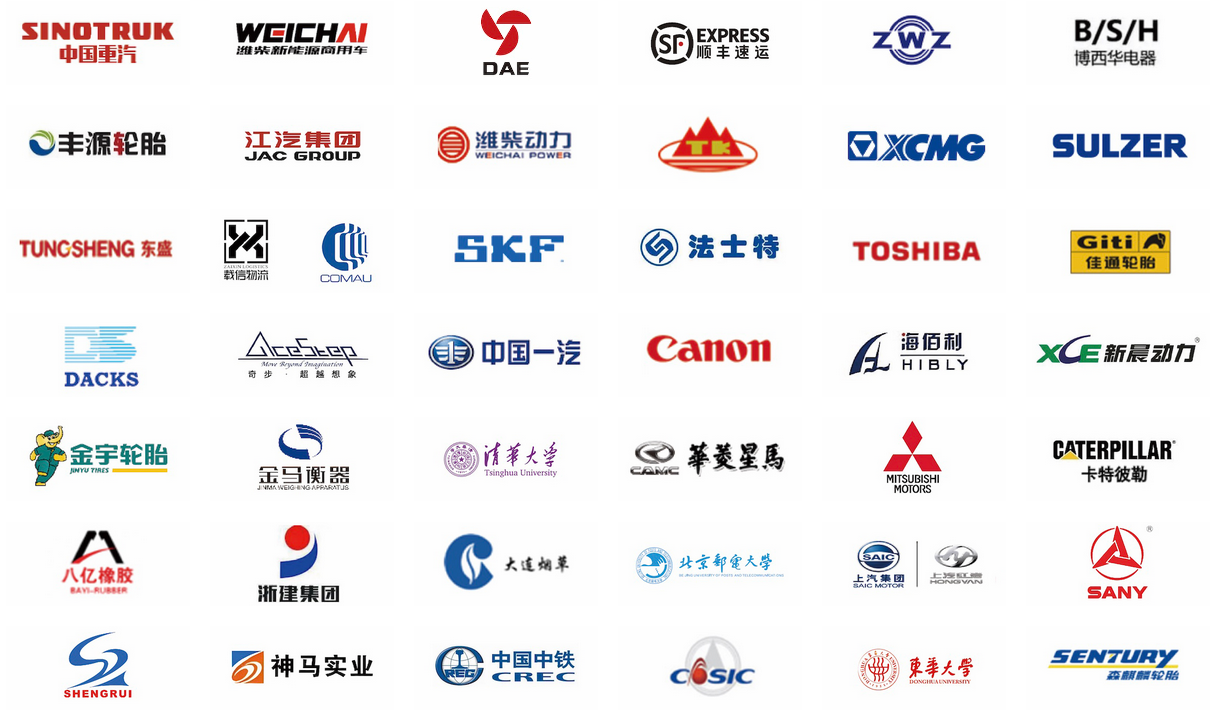
1883D6D19D79454E9B3FA44C8F7F50F7.png)